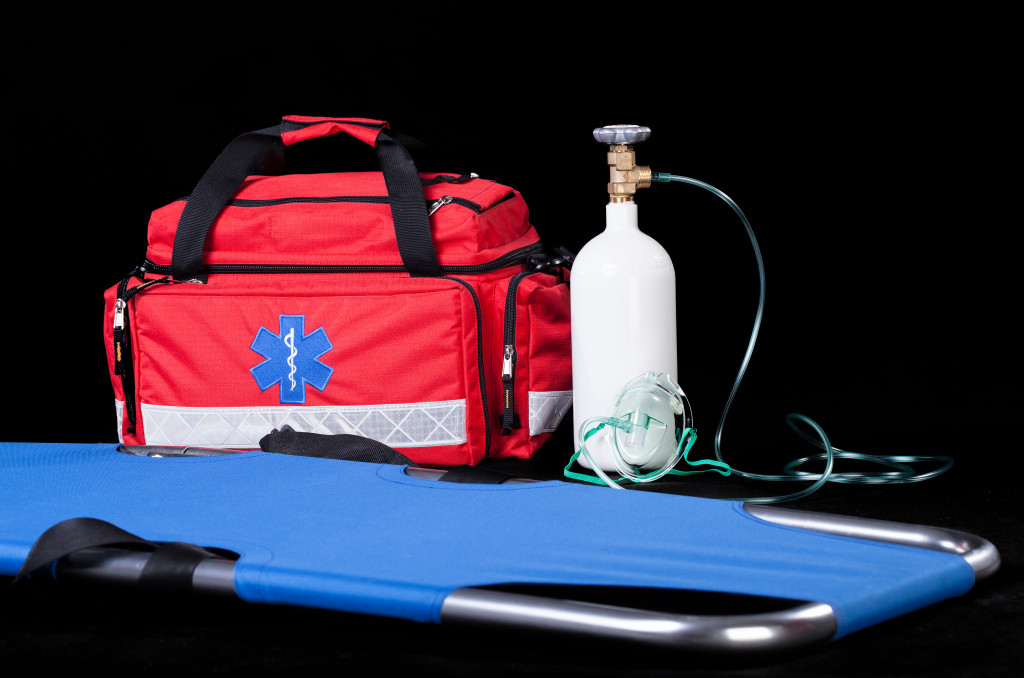• Oxygen cylinders are essential for many medical applications, but it is important to know the safety precautions when transporting them.
• Before transport, secure the valve and use an appropriate carrier such as a wheeled cart, backpack, or harness.
• Always check local regulations before transporting these cylinders and avoid open-top vehicles such as convertibles.
• When flying, always declare and provide documentation for your oxygen cylinder at the ticket counter before boarding.
Oxygen cylinders are essential for many medical applications, but transporting them is not always easy. Knowing the proper techniques and safety precautions to safely transport these is important. Here’s what you need to remember when moving an oxygen tank from one place to another.
The Need for Oxygen Cylinders
Oxygen cylinders are often used to provide additional oxygen for medical patients who require supplemental use. For example, those with COPD, asthma, or sleep apnea may need a portable oxygen tank to get the extra O2 they need when away from home. Athletes and people with chronic respiratory issues, including emphysema and cystic fibrosis, can also use these tanks to ensure they have the oxygen their bodies need.
Transporting Oxygen Cylinders Safely
Before transporting, you should take a few safety precautions.
Secure the Valve
The first step in safely transporting an oxygen cylinder is to ensure that the valve is securely closed. If you are unsure whether the valve has been properly closed, it’s a good idea to test it with a tube or device that can detect any air escaping. Once the valve is secure, attach a strap around the cylinder to ensure that it stays securely in place during transport.
Choose an Appropriate Carrier
When selecting a carrier, it’s important to choose one designed specifically for this purpose. Choose one that will fit your needs and provide adequate support for your equipment during transport. Ensure that your chosen carrier has proper ventilation, so your oxygen cylinder does not overheat during transit. Here are some carriers that you may consider:
- Wheeled carts are a great option when transporting an oxygen tank over long distances. They provide extra support and can make the transport process much easier.
- Backpacks are a good choice when transporting over short distances. They are lightweight and provide enough support for the weight.
- Harnesses are designed to be worn around the waist or shoulders to provide extra support for the cylinder during transport.
- Oxygen cylinder storage is also available to keep your tank secure during transport. These are steel or hardened plastic and can be locked to prevent tampering.
Check Local Regulations
Some areas may have specific regulations governing how oxygen cylinders should be transported. Before transporting, check with local authorities or medical professionals in your area to ensure you are aware of applicable laws or regulations about its transportation. For instance, in the State of California, it is illegal to transport oxygen tanks in the passenger compartment of a motor vehicle. While in some states, you may be required to display a special placard on your vehicle when transporting them.

What to Avoid
In general, it is best to avoid transporting oxygen cylinders in open-top vehicles such as convertibles or vans with windows that can be opened. Additionally, this should never be placed in the trunk of a vehicle. The trunk is not a safe place for a compressed tank, as fumes from other items in the vehicle could cause an explosion.
Ideal Means of Transportation
The ideal means of transportation for oxygen cylinders is a specially-designed vehicle, such as an ambulance or medical transport van. If you need to transport this in your vehicle, make sure that it is secured in the back seat and can be accessed quickly and easily. Additionally, all windows should remain closed during transit.
If flying, always check with the airline ahead to ensure you can bring these on board. Most airlines require you to declare and provide documentation at the ticket counter before boarding. Ensure your oxygen tank meets all applicable regulations and is securely fastened to prevent any damage during transport.
When using trucks or vans, ensure that the oxygen cylinder is always stored in an upright position and securely fastened, either with straps or tie-downs. It should also be placed away from flammable objects to prevent a fire hazard.

Always remember to practice safe handling procedures when transporting oxygen cylinders. This includes securely fastening the valve, using a sturdy and appropriate carrier, and following any local regulations that may apply. You can ensure safe transport from one place to another with the right precautions.
